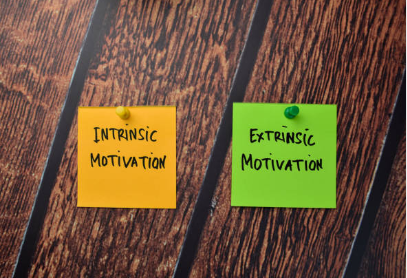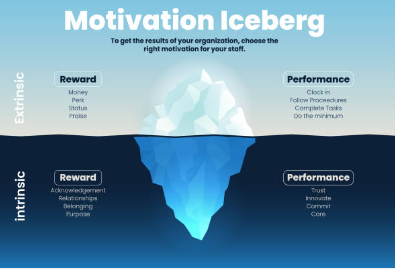Theories About How Motivation Works
Let’s look at some of the most common examples of motivation and how it works.

Selfpause Affirmation App
Download the app to get 1,000’s of affirmation meditations and everything you need to write, record and listen to your own.
There are several theories about how motivation works. They include: Intrinsic motivation, Extrinsic motivation, fear-based motivation, and social interaction. These theories are not mutually exclusive, however. They differ in some ways, and they can be useful in different situations.
Intrinsic motivation

Intrinsic motivation can lead to a happier, more fulfilled life. When an individual understands the value of doing something, they are more likely to engage in the activity and stick with it. Intrinsic motivation is a good way to develop new habits and practice skills. It is the most common form of motivation and can be used for many purposes.
Intrinsic motivation is an extremely complex cognitive, affective, and behavioral phenomenon. Many neural processes and structures are thought to play a role. In particular, the neurotransmitter systems are thought to be involved. While these findings are not conclusive, they provide a good entry point to studying the neurobiology of intrinsic motivation.
One of the ways to encourage intrinsic motivation is through play. Children who feel secure with their parents show greater desire to explore, interact, and learn. Intrinsic motivation is an important part of learning in school. In an example, a child may find it more exciting to study interesting aspects of Shakespeare than to study the play itself. This makes the classwork more engaging.
Intrinsic motivation is linked to alterations in neural networks that are involved in learning, self-referential cognition, and attentional control. Using neuroimaging to study these networks may help us better understand the neural mechanisms underlying intrinsic motivation. In the future, these regions can be precisely targeted in future research.
A large body of research has been conducted on the factors that undermine and promote intrinsic motivation. It is important to remember that intrinsic motivation is not an automatic function. It is a lifelong psychological growth process and depends on a number of environmental factors. These factors can affect performance, cognitive flexibility, and self-awareness.
Extrinsic motivation

Extrinsic motivation is when an individual receives an external reward for completing a behavior. For example, a parent might give a child money if they do their homework. Once the parent takes away the reward, the child may no longer feel motivated to complete the task. This type of motivation is effective for short-term tasks, but not for maintaining a behavior over the long term.
Extrinsic motivation is an excellent way to get people to do things they don’t necessarily enjoy. It can motivate you to clean the house, take care of your spouse, or work for a company. However, it doesn’t work well for creative work or jobs that require creativity.
In education and workplace settings, extrinsic motivation plays a critical role. Children are rewarded for meeting their targets, and employers often use extrinsic motivation to entice employees to achieve their goals. These motivations are not necessarily negative; they can motivate employees to perform better than they might otherwise.
While extrinsic motivation is not the best option for every situation, it can be helpful in a variety of situations. Extrinsic motivation is especially useful when it is difficult to complete a task. Often, people would prefer to skip a task or finish it faster, but extrinsic rewards provide a constant incentive to get them to finish the task.
The most common extrinsic motivator is a reward that comes from outside. This reward can be a tangible or intangible object. It is a reward that the individual highly wants.
Social interaction

The process of social interaction is an important factor in motivating our behaviors. We release natural opioids that activate the reward system of our brains when we interact with others. Face-to-face interaction has been shown to improve babies’ language learning. Although there are many digital tools that can supplement this learning, in-person interaction is still a vital element of the learning process.
The motivational process that humans use to accomplish tasks is a complex process. It involves numerous factors, including the environment and genetics. Ultimately, this process can help alleviate or aggravate mental disorders. Research has found that our social interactions affect the way we learn, interact, and achieve goals. Social interaction is also important in the development of confidence and a sense of belonging.
Internal reward

Intrinsic rewards are motivational tools that create a win-win for both the employee and the organization. They are also more cost-effective and can be used when funds are tight. In addition, they don’t require a supervisor’s presence. Employees can set their own goals and receive a sense of purpose from completing these tasks.
An example of an intrinsic reward is helping someone. This can be based on empathy, self-accomplishment, or even enjoyment. People who are motivated by internal reward are more likely to continue an action. As they accomplish a goal, they feel a sense of self-satisfaction and joy. This will engage them over time.
Using an internal reward as a motivational tool can increase employee engagement, improve productivity, and reduce employee turnover. The most important thing to remember is to tailor the reward to the needs of your employees. People want to feel appreciated for the work they do, and rewards for doing so should be related to those goals.
An organization’s success depends on its employees’ motivation. Without highly motivated employees, it is unlikely to reach its full potential. It is essential to reward employee efforts, and to encourage them to do their best. As the study shows, the link between rewards and employee motivation is a strong one.
In a workplace environment, employees may choose to receive both intrinsic and extrinsic rewards. Extrinsic rewards come in the form of monetary compensation, which is often derived from the manager’s actions. Intrinsic rewards, on the other hand, are the feelings of accomplishment and pride gained by employees. While the latter may be more tangible, intrinsic rewards are self-administered.
Our Top FAQ's
There are several theories about how motivation works, including Maslow’s hierarchy of needs, self-determination theory, cognitive dissonance theory, and self-perception theory.
Biological and psychological factors, such as genetics, hormones, and emotional states, can influence motivation. For example, the hormone dopamine is involved in reward-seeking behavior and can increase motivation.
Goals and incentives can affect motivation by providing direction and a sense of purpose, as well as a reward for achieving those goals.
Self-determination theory suggests that motivation is driven by three basic psychological needs: autonomy, competence, and relatedness. When these needs are met, people are more likely to be motivated and engaged in their activities.
Cognitive dissonance theory posits that when people experience inconsistency between their beliefs and behaviors, they experience psychological discomfort, which can lead to a change in motivation in order to reduce this discomfort.
